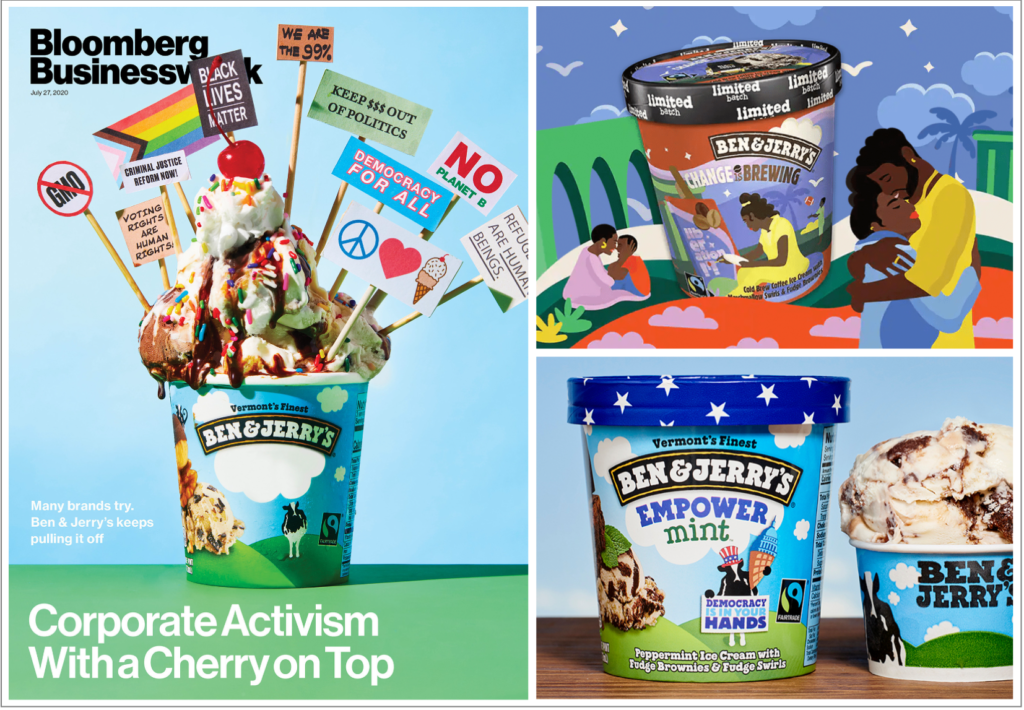Building Your Brand: Imagery
A brand can establish a unique visual language that is instantly recognizable by consistently using specific styles, colors, and themes in its imagery. This blog post explores the crucial role of visual elements — photographs, illustrations, and graphics — in crafting a brand’s identity.
Crafting a Visual Identity with Imagery

Crafting a brand’s visual identity involves a holistic approach where every image, color, and graphic element plays a significant role. Take, for example, Ritual, a health and wellness brand known for its transparent approach to dietary supplements. The hero image on their website and in marketing materials features its distinctive, clear capsules against a simple, yellow backdrop. Ritual’s use of yellow helps the brand convey a sense of energy and vitality. Furthermore, in the health and wellness sector, green is a predominant color theme due to its association with nature and health. Ritual’s choice of yellow allows it to stand out from others in that market.

Ritual’s core values are simplicity, cleanliness, and science-backed product development, with emphasis on transparency and traceability in their supply chain. The brand’s use of clear, transparent capsules directly references its value of transparency. It also allows consumers to see inside the product, symbolizing Ritual’s openness about their ingredients and sources.
To reinforce their commitment to science-based product development, Ritual’s imagery often includes references to science and research, such as lab equipment or scientific symbols. This imagery supports their narrative of challenging top scientists to reimagine the daily multivitamin.
Through its curated visuals, Ritual not only showcases its products but also reinforces the narrative that it celebrates clarity, quality, and an evidence-based approach to wellness. This visual storytelling ultimately strengthens the brand’s connection with consumers who prioritize health and transparency.
The Strategic Use of Imagery

In branding, the strategic use of imagery goes beyond creative appeal, it’s about aligning visual elements with the brand’s values, messaging, and aspirations. For instance, Ben & Jerry’s uses vibrant, playful imagery to showcase its unique ice cream flavors and proclaim their brand’s values — joy, community, and social activism. This deliberate alignment of visuals with the brand’s values ensures that every image is not only delightful but also communicates Ben & Jerry’s commitment to quality, environmental sustainability, and social justice.
Differentiation Through Imagery
Imagery provides an unique opportunity to stand out. DJI excels at this by using stunning aerial imagery that showcases the technical capabilities of their drones and speaks directly to the aspirations of their customers. Their imagery is captivating, inviting viewers into a world of possibility and adventure. It becomes a way to connect with consumers motivated to discover, create, and share their own views of the world through aerial photography. DJI’s approach not only distinguishes the brand in a competitive tech market but also resonates with the spirit of exploration and creativity in their audience.
Connecting with the Audience

Having innovative products is not enough to form a deep connection with an audience. By using imagery that sparks emotions and inspires action, a brand can create that connection. Headspace demonstrates this principle by using illustrations that evoke a sense of calm and mindfulness. To represent their meditation and mindfulness services, they use soft colors and simple drawings in their app and marketing materials. The calming and relatable scenarios featured in their drawings often initiate an emotional response from its audience. This imagery differentiates Headspace in the tech wellness market and cultivates a supportive community of users who see the app as a safe place for mental well-being.
Resources for High-Quality Imagery
Creating a compelling visual identity requires access to high-quality imagery. Here are some resources that your brand can use:
- Unsplash: Free, high-resolution photos provided by photographers worldwide.
- Pexels: Vast collection of free stock photos and videos perfect for diverse and high-quality visual content.
- Pixabay: Wide range of free stock photos, vectors, and illustrations.
- Adobe Stock: Premium selection of stock images, graphics, and videos, offering professional-grade visuals for brands looking for highest-quality content.
- Shutterstock: Another premium source offering millions of high-quality images, videos, and music tracks, catering to brands that need a wide variety of professional visuals.
- Getty Images: Extensive collection of high-quality photos and illustrations for brands seeking premium visual content.
- iStock by Getty Images: Vast library of royalty-free stock images, videos, and illustrations that are high-quality and have a more affordable price point than Getty Images.
- Flaticon: A large database of free vector icons in various formats, ideal for brands needing specific icons for web and print media.
- The Noun Project: Features a massive collection of icons for virtually every concept imaginable, perfect for brand designs needing clear and universal symbols.
- Iconfinder: Provides a wide range of icons in different styles and categories, making it easy for brands to find icons that match their visual identity.
- Storyset: Free illustrations that can be customized and animated for landing pages, apps or presentations.
Best Practices for Using Imagery in Branding
- Align Imagery with Brand Values: Choose images that reflect your brand’s core values and message.
- Prioritize Quality: High-quality, professional images make your brand look more credible and appealing. Invest in professional photography or high-quality stock images.
- Be Authentic: Use imagery that represents your brand authentically. Avoid overly staged or generic photos that could disconnect your brand from your audience.
- Maintain Consistency: Ensure that your imagery maintains a consistent style and quality across all platforms. This consistency will strengthen your brand identity and brand recognition.
- Understand Your Audience: Choose images that resonate with your target audience. Learn their preferences, lifestyles, and aspirations to guide your imagery selection.
- Tell a Story: Use imagery to tell your brand’s story. Choose images that together narrate your brand’s journey or spirit to engage your audience more deeply.
- Consider Cultural Sensitivity: Be mindful of cultural nuances and sensitivities in your imagery. What works in one culture may not be appropriate in another.
- Stay Updated: Refresh your imagery regularly to keep your brand looking current and relevant. However, ensure that these updates are in line with your established brand identity.
- Optimize for Different Platforms: Tailor your images for different platforms, considering aspect ratios, resolutions, and the context in which they will be viewed.
- Leverage User-Generated Content: Encourage and share imagery created by your customers. It adds authenticity and can foster a sense of community around your brand.
The Power of Imagery
Using imagery is a powerful way to communicate your brand’s identity. Every image you use is an opportunity to showcase who you are, what you stand for, and why you matter. Choose imagery that reflects your brand’s personality and resonates with your target audience so your brand not only gets noticed but is also remembered and valued.
Building Your Brand with Talawa AI
Talawa AI provides brand-agency style services in a collaborative AI-powered platform that allows businesses to self-steward their brand from logo creation to identifying target customers. Talawa’s AI assistant guides you through the branding journey, which begins with the creation of a complete brand identity: name, logo, colors, typography, imagery, brand voice and tone, brand story, tagline and target audience and enables businesses to proactively shape the brand to align with evolving goals.